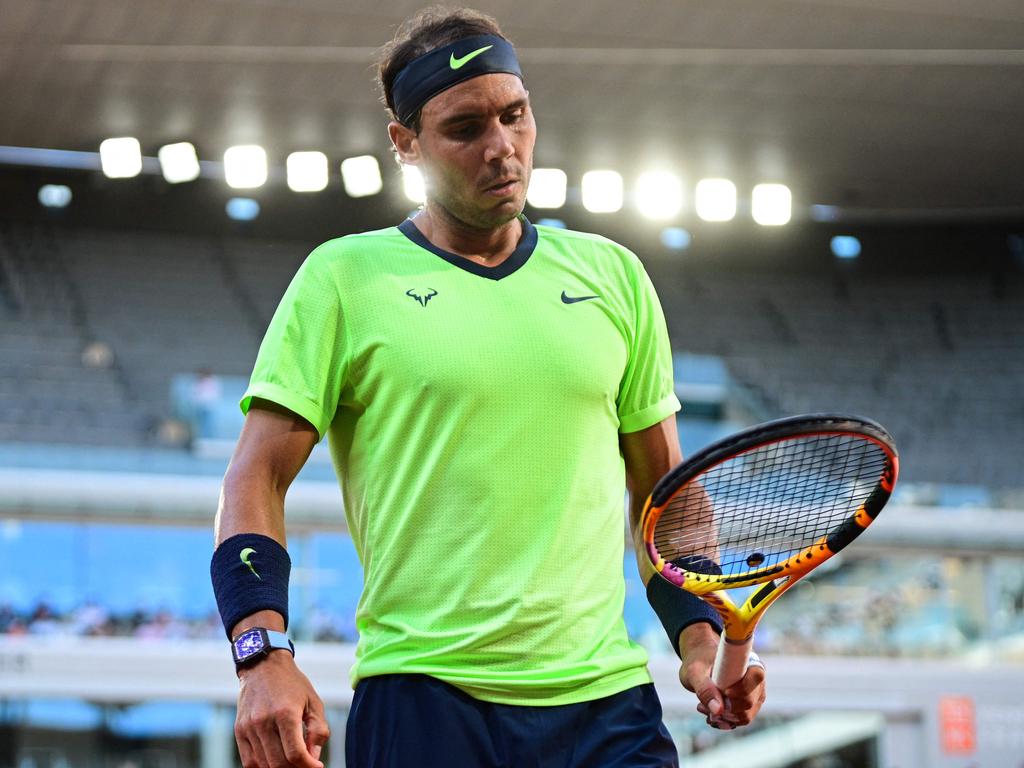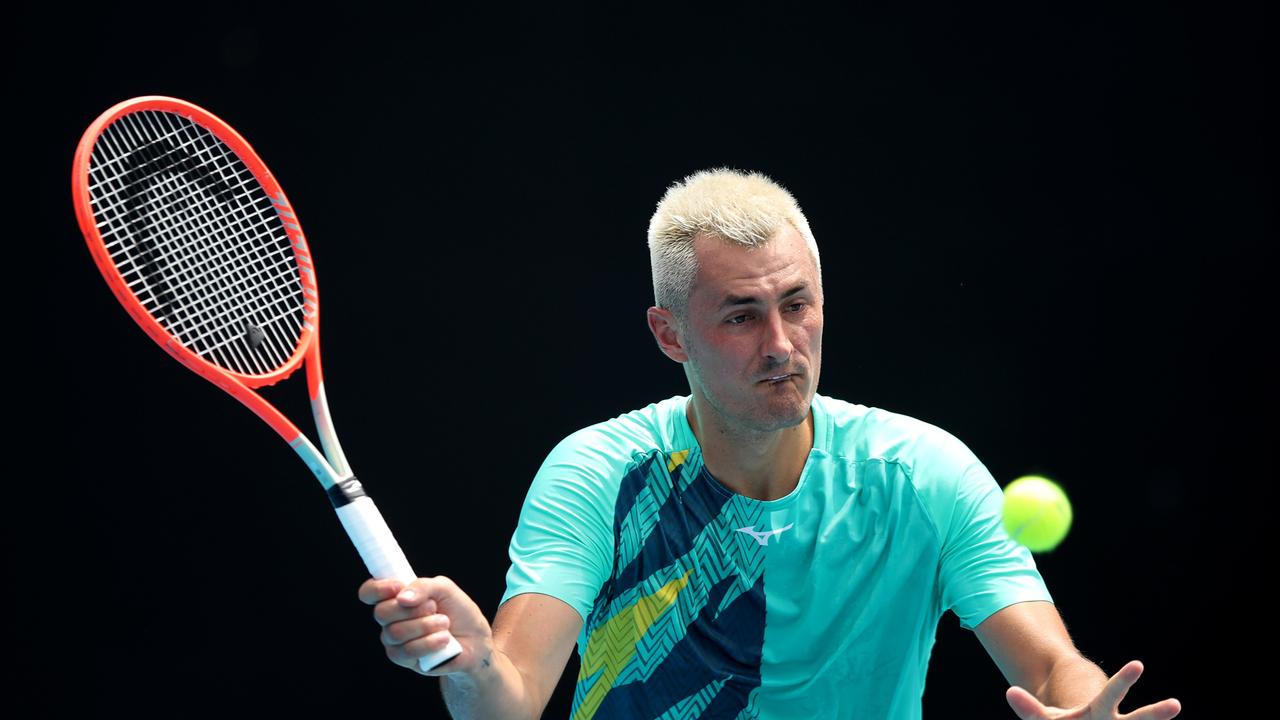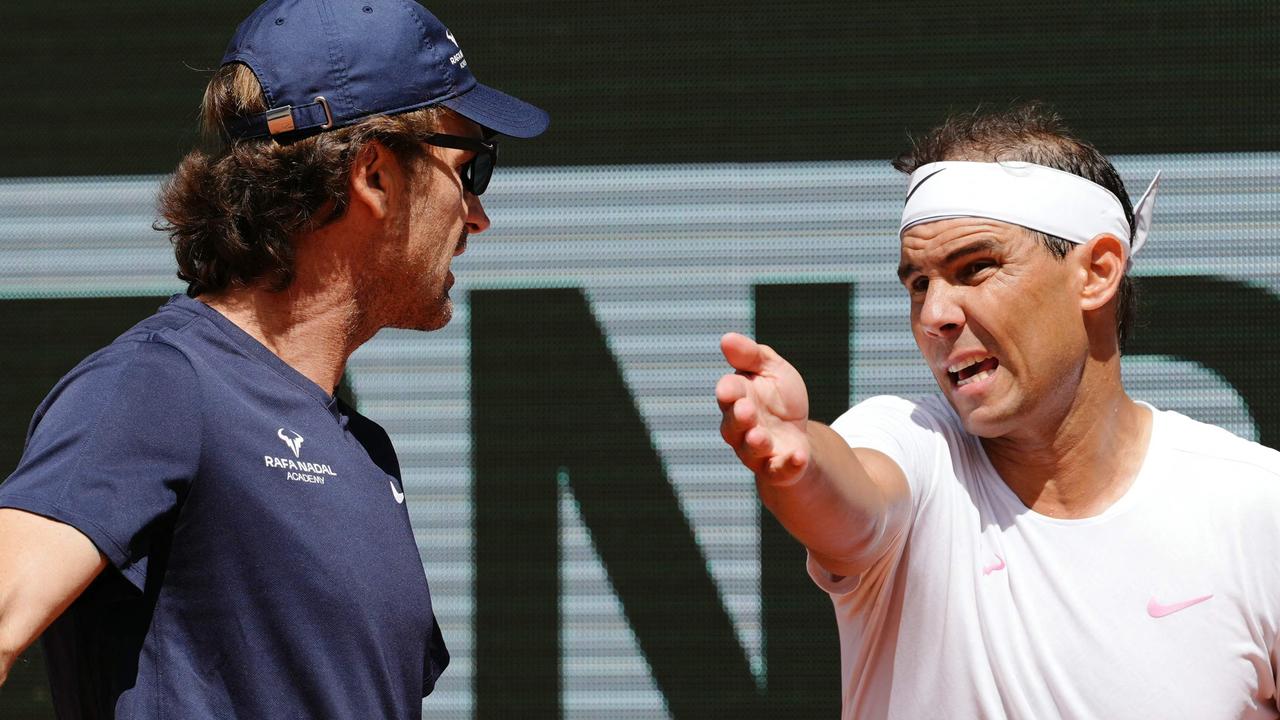Djokovic leads player revolt against ATP, Federer and Nadal
A potentially explosive tennis civil war is brewing with Novak Djokovic on one side and Roger Federer and Rafael Nadal on the other.

Not for the first time this year tennis is threatening to go to war with itself as Novak Djokovic leads the charge with an anti-establishment agenda designed to shake up the sport.
This week the world No. 1 fronted a new-look Professional Tennis Players Association (PTPA) as he and his colleagues launched a renewed effort to demand more from governing body the ATP.
Watch Tennis Live with beIN SPORTS on Kayo. Live Coverage of ATP + WTA Tour Tournaments including Every Finals Match. New to Kayo? Try 14-Days Free Now >
Last year, several players on the ATP Player Council quit and revealed their intention to start a breakaway group to act in the interests of players, some of whom felt they were being short-changed and exploited.
The aim was to form a players’ union of sorts that could negotiate with tournaments on issues such as prizemoney, rather than relying on the ATP to do so.
Vasek Pospisil was one of the earliest players to align himself with Djokovic and the PTPA and the political divide was back in the headlines earlier this year because of the Canadian’s foul-mouthed tirade at the Miami Open against ATP chairman Andrea Gaudenzi.
What was the reaction like?
Pospisil received plenty of support from fellow players, many of whom empathised with his frustration at the political climate they were operating in.
The likes of Denis Shapovalov, Ivo Karlovic, John Isner and Milos Raonic all threw their weight behind Pospisil.
However, not everyone was on board.
Last year Roger Federer and Rafael Nadal — both members of the ATP Player Council who fully support the govening body — condemned Djokovic and his revolt, saying the sport needed to stick together during tough times caused by the global pandemic.
“The world is living a difficult and complicated situation. I personally believe these are times to be calm and work all of us together in the same direction. It is time for unity, not for separation,” Nadal said last August.
“These are moments where big things can be achieved as long as the world of tennis is united.
“We all, players, tournaments and governing bodies have to work together. We have a bigger problem and separation and disunion is definitely not the solution.”
Federer added his support for Nadal, tweeting: “I agree @RafaelNadal. These are uncertain and challenging times, but I believe it’s critical for us to stand united as players, and as a sport, to pave the best way forward.”
But Federer has remained silent on the lingering political tension after Pospisil reignited the debate, opting not to make public commentary on the matter.
What’s clear, though, is that the Swiss maestro and Nadal — by remaining on the ATP Player Council after Djokovic quit — have very different views on the state of the sport than the Serbian champion.

What was the original problem?
As recently as April, the PTPA’s biggest issue was it had no clear and coherent strategy.
Tennis pundits may have been supportive of the move to ensure players’ rights are upheld, but the haphazard way in which Djokovic and Co. were going about venting their discontent left everyone more confused than enlightened.
“We still haven’t seen a detailed, comprehensive list of the concerns and what they hope to achieve. We now just have a hashtag — that’s the only development,” broadcaster Catherine Whitaker told The Tennis Podcast in April.
“Let’s hear the details of those concerns and the evidence to back it up.
“Let’s hear the case.”
It was a sentiment echoed by many in the tennis world, and some players heard the concerns. Japan’s Taro Daniel and American Ryan Harrison both tried to clarify the intention of the PTPA, but there was still no unified approach.
Individuals making personal statements on their social media pages was all well and good, but it didn’t do anything to change the notion the PTPA was a disorganised rabble.
‘Unfathomable’: What’s changed and why are we talking about this again?
During the week the PTPA unveiled its own website, as well as an advisory board and the support of a professional communications team to help harness its message.
Its first act as a formal organisation was to release a statement outlining its gripes with the ATP — specifically its 30-year Strategic Plan.
“The Plan is extremely vague about key issues including, but not limited to, a complete understanding for how it will affect revenues, health benefits, prize money, player image rights and tournament commitments for the next 30 years,” The PTPA said.
“It appears the ATP seeks to profit from the players’ images and to retain ‘control of data rights’ in order to generate revenue from ‘betting and non-betting markets’. We have serious questions about how the ATP plans to mind player data and who owns the data.
“The Plan may endanger each player’s ability to build their personal brands and freely use their own name, image and likeness for the next 30 years.”
The PTPA statement ended with a list of questions it wants the ATP to answer before players are asked to vote on the implementation of its Strategic Plan. They included:
— What benefits do the players receive for granting the ATP the right to mine and monetise their data?
— Do players share in the increased value to ATP Media?
— Do players share in the increased value to the tournaments?
— What added benefits (health insurance, pension) will the players receive?

Djokovic himself issued a statement, reiterating the PTPA’s desire for the ATP to delay a vote on the Strategic Plan.
“It is unfathomable that the ATP would vote the week of June 27 2021, when they have yet to finalise many elements of their deal that may impact the players’ health, wellness and their ability to make fair wages,” he wrote.
“Thirty years is a very long time and will have a lasting and profound effect on players today and for generations to come. We simply need transparency and answers to important questions.”
Djokovic and Pospisil also spoke to reporters in a lengthy press conference — the first as a unified PTPA — on Saturday (AEST), along with executive director Adam Larry.
Here, the PTPA doubled down on its criticism of the ATP’s approach to governing tennis but at the same time was keen to make clear it wanted to work with the ATP, not against it, to ensure players’ interests were being looked after.
“We want to be accepted, respected and acknowledged,” Djokovic said. “That’s what we want. That’s what we deserve as players.
“When I say ‘we’, I don’t just think and say that it’s about Vasek and myself or PTPA management. It’s about players and hundreds of players that are part of PTPA movement and part of PTPA initiatives.
“This is what our aim is — we will never find out how PTPA will be incorporated or not incorporated within the current ecosystem of tennis, the structure, until certain things are done and certain steps are made.”
Larry added: “We think there’s a lot in that plan that makes a lot of sense but there’s a lot in that plan that we just don’t know,” he said. “We’ve said a lot of times, it’s pretty clear to us that if we don’t have answers, how can a plan like this be voted on?”
The response: Battle lines drawn

The PTPA’s latest moves did not sit well with the ATP, who issued a strongly worded response warning against fracturing tennis.
It made mention of the ATP Player Council, “whose representatives are democratically elected by all players, work week-in, week-out to advance the interests of player”.
“Protecting and advancing the interests of players has been a core principle of the ATP since it was founded as a player association in 1972,” the ATP wrote.
“The creation of a separate player entity provides a clear overlap, divides the players, and further fragments the sport. Fragmentation has been consistently identified as the single biggest threat to tennis’ growth potential by leading experts, from within and beyond sports.
“The ATP will continue to do everything in its powers to protect the interests of its members, both players and tournaments, and the many livelihoods that the Tour supports.”
Clearly, battle lines have been drawn.
But the PTPA has also received support from other sports. The Major League Baseball Players Association stood in solidarity with Djokovic and Co, saying: “The MLBPA supports the Professional Tennis Players Association’s efforts to organiser and improve player working conditions.
“Collective bargaining is a powerful tool when there is commitment to improving your workplace conditions and positively impacting the economic wherewithal of those in your membership.”
America’s National Hockey League Players’ Association and the Major League Soccer Players’ Association have also shown their support for the PTPA.



